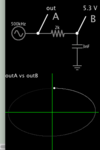jimmykk
Full Member level 3
Do you really want to process 100 Vpp signal with operational amplifiers? There are very few high voltage OPs on the market (e.g. from APEX company), they are quite expensive and don't necessarily achieve 500 kHz power bandwidth.
Yes, the amplitude has to be high but i can be bit flexible with that if we could find a suitable op amp that can do the job properly at somewhat lower amplitudes. But the frequency has to be fixed(500khz), it cannot be changed.
Yes i ordered couple of PA78DK op amp from them. Let's see how they turn out to be. I am bit worried about GBP of them, but as i said the amplitude does not need to be amplified(same in same out). It is worth a shot.
If there is any other suitable candidate, i am open for suggestions.

